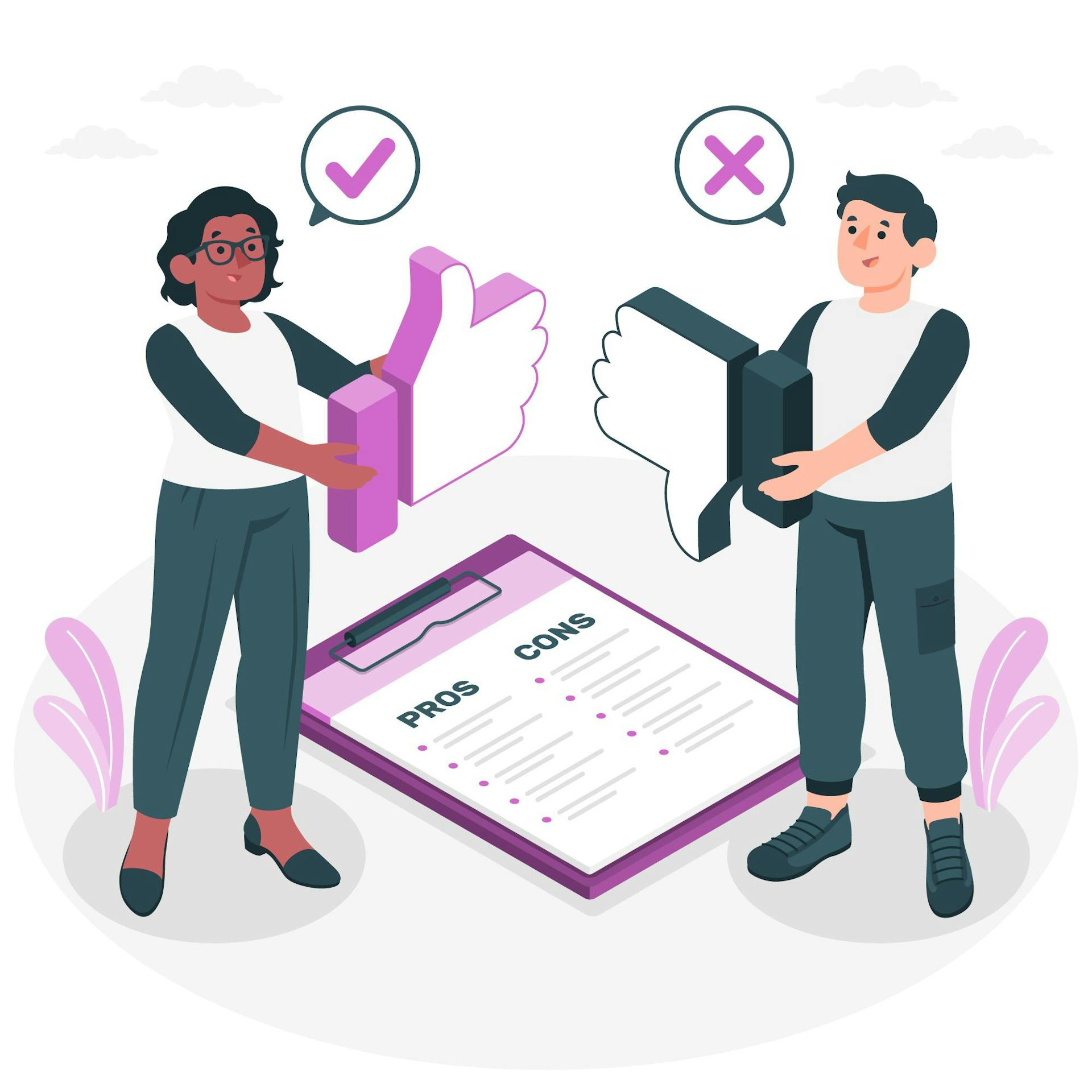The Dos and Don'ts of Sourcing on LinkedIn: Examples and Best Practices
Published on April 3rd, 2023
Recently, Hire Quotient (HQ) launched ‘EasySource’, an innovative tool that could help recruiters with talent sourcing on LinkedIn. If you are a recruiter and haven’t tried it yet, you are missing out on a lot of good candidates.
However, the tool proves more effective and can help you find the right talent for your organization if you use it the right way. Yes, the right way!
You might be wondering how you can go wrong with sourcing on LinkedIn. Honestly, thousands of recruiters do it incorrectly.
Fret not! In this blog, we will be telling you some of the prominent do’s and don’ts which, if followed, can help you hire the best candidates from the talent pool.
So, get your pen-paper ready, and jot down the points highlighted ahead.
Do’s and Don’ts During Sourcing on LinkedIn
Often recruiters make some errors unintentionally which debars them from selecting the right candidates. We have made a list of top 8 do’s and don’ts you should keep in mind while talent sourcing on LinkedIn.
1. Don’t leave them hanging for results
One thing every candidate hates is multiple follow-ups and then the trail going cold. This is more saddening when they are looking for a job on an urgent basis.
This delayed or no response results in a negative impression on the candidates. Further it will make your organization look bad on employee reviewing and hiring platforms like LinkedIn, Glassdoor, Snaphunt, AngelList, etc.
Additionally, it’s a loss for companies as well. How?
Simple! They lose an opportunity to work with a talented candidate.
So, in order to avoid such loss on both sides, it’s better that you keep them posted about the status of their job applications. Don’t ask us how; there are a gazillion ways to do it like a phone call, email, notifying on the applied platform, and the least of all a text message.
2. Do update correct details
You must have come across posts where some or the other details such as job description, compensation, job profile, etc. are incorrect. When we say incorrect, it does not mean grammatical errors.
What we mean to say is either the job profile and description are mismatching or compensation is updated for per month instead of annum. These are just examples, the list is endless.
But it’s better if you cross check the post before pushing it. This is for every platform you post.
3. Don’t underpay the candidates
Underpay is the most common reason that refrains candidates from applying in your organization. Also, it is one of the prime factors that provokes the employees into moonlighting or looking for an opportunity with a better pay grade.
Suppose, you have a candidate with experience of 5+ years applying for a certain position. But to save on the hiring budget, the recruiter makes an offer that neither complies with the current market scenario, nor it justifies the expertise and experience of the candidate. What do you think will happen?
He would either withdraw his application or accept the offer and switch to another company offering a better remuneration, within a short span. And you know, it’s purely your loss.
In order to avoid such situations, it's better that you offer a decent and justified salary to candidates based on their talent, skillset, and experience. Remember, a cost saved now to impress management can lead to an embarrassing situation in the future.
4. Do send them personalized message
It’s always better to send personalized messages on LinkedIn. Think of it in this way; would you like it if someone sent you a copied message about a job profile with some other candidate’s name on it?
Of course not!
Similarly, no candidate would like to get a message with a greeting addressed to some other person. Hence, it’s better to write a customized message addressing the person whom you are sending it to.
5. Don’t judge on resume or profile
There’s a saying, “Don’t judge a book by its cover.” We’d say, “Don’t judge a candidate by his/her resume or LinkedIn profile.” And yes, we have a solid reason for that.
Often, candidates don’t update their profile for a long time. As far as the resume is concerned, you cannot expect to write everything they have learnt and experienced in their previous jobs on mere two sheets of paper.
The best way is to connect with them, give them a skill assessment, and evaluate their performance. Although this process still won’t tell you about their performance and caliber, it will only give you enough to understand candidates' knowledge and basic skill set.
6. Do enable the option of ‘easy apply’
Admit it, we all hate filling forms with hundreds of questions. In fact, when you apply for any job interview, filling the same details repeatedly for every vacancy is a cumbersome task.
Well, thanks to LinkedIn’s new feature of ‘easy apply’, candidates can submit job applications in jiffy. They don’t need to go through an arduous process of entering each and every detail for multiple job vacancies.
‘Easy apply’ uses saved resumes and previously recorded responses to make the process easier. The candidates need to crosscheck the answers and submit the application. That’s it!
So, while you are talent sourcing on LinkedIn, enable this option to receive a good amount of applications and select the best candidates from them.
7. Don’t ignore mutual connections
One important mistake that you should avoid as much as possible is ignoring mutual connections. You might have seen people commenting #CFBR (Commenting For Better Reach) on the posts of their connections looking for jobs.
Do you know why? That’s because they act as a conduit between the recruiters sourcing on LinkedIn and jobseekers.
However, many recruiters just skip such posts. We would suggest not doing that. If you come across any such posts where your mutual connection has commented #CFBR, check the authors profile.
Try this for yourself. There are great chances that you can find the talented professional you were looking for.
8. Do mention the salary cap in post
Last but not least, do not forget to mention the salary cap. That’s because candidates with higher packages often get disappointed on learning that the salary cap is not as high as they are expecting. Especially when they are informed this during the initial screening round.
Additionally, it wastes the time of the recruiter as well as the candidates. This can be avoided by mentioning the salary bracket in your LinkedIn job post.
This will further reduce the applications from the candidates looking for a salary higher than the bracket you’ve mentioned.
Conclusion
LinkedIn is one of the reliable and trusted platforms for working professionals. Since its launch, it has connected people for business, jobs, and various opportunities to boost their career.
For recruiters, sourcing talent on LinkedIn is one of the highly reliable and easy methods. In fact, when you join any office, you tend to follow and connect with your colleagues to find if you have any common grounds or check each other's previous experience.
It can be said that LinkedIn is the perfect social media platform for recruiters, entrepreneurs, professionals, and every person who is working. And if such a platform used in the right way can help you find the best talent with relative experience for your organization.
We have listed the do’s and don’ts you should keep in mind while talent sourcing on LinkedIn. Do give them a try and let us know how it worked for you. Till then, keep recruiting.
Authors

Radhika Sarraf
Radhika Sarraf is a content specialist and a woman of many passions who currently works at HireQuotient, a leading recruitment SaaS company. She is a versatile writer with experience in creating compelling articles, blogs, social media posts, and marketing collaterals.

Hire the best without stress
Ask us how
Never Miss The Updates
We cover all recruitment, talent analytics, L&D, DEI, pre-employment, candidate screening, and hiring tools. Join our force & subscribe now!
Stay On Top Of Everything In HR
